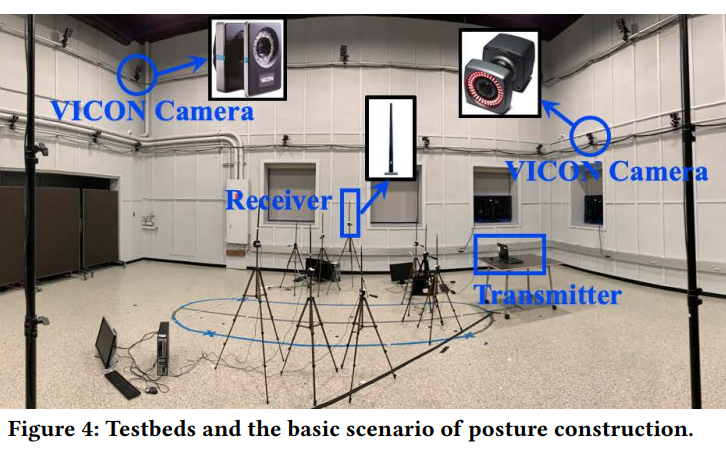Towards 3D human pose construction using wifi
PubDate: April 2020
Teams: State University of New York at Buffalo
Writers: Wenjun Jiang, Hongfei Xue, Chenglin Miao, Shiyang Wang, Sen Lin, Chong Tian, Srinivasan Murali, Haochen Hu, Zhi Sun, Lu Su
PDF: Towards 3D human pose construction using wifi

Abstract
This paper presents WiPose, the first 3D human pose construction framework using commercial WiFi devices. From the pervasive WiFi signals, WiPose can reconstruct 3D skeletons composed of the joints on both limbs and torso of the human body. By overcoming the technical challenges faced by traditional camera-based human perception solutions, such as lighting and occlusion, the proposed WiFi human sensing technique demonstrates the potential to enable a new generation of applications such as health care, assisted living, gaming, and virtual reality. WiPose is based on a novel deep learning model that addresses a series of technical challenges. First, WiPose can encode the prior knowledge of human skeleton into the posture construction process to ensure the estimated joints satisfy the skeletal structure of the human body. Second, to achieve cross environment generalization, WiPose takes as input a 3D velocity profile which can capture the movements of the whole 3D space, and thus separate posture-specific features from the static objects in the ambient environment. Finally, WiPose employs a recurrent neural network (RNN) and a smooth loss to enforce smooth movements of the generated skeletons. Our evaluation results on a real-world WiFi sensing testbed with distributed antennas show that WiPose can localize each joint on the human skeleton with an average error of 2.83cm, achieving a 35% improvement in accuracy over the state-of-the-art posture construction model designed for dedicated radar sensors.


